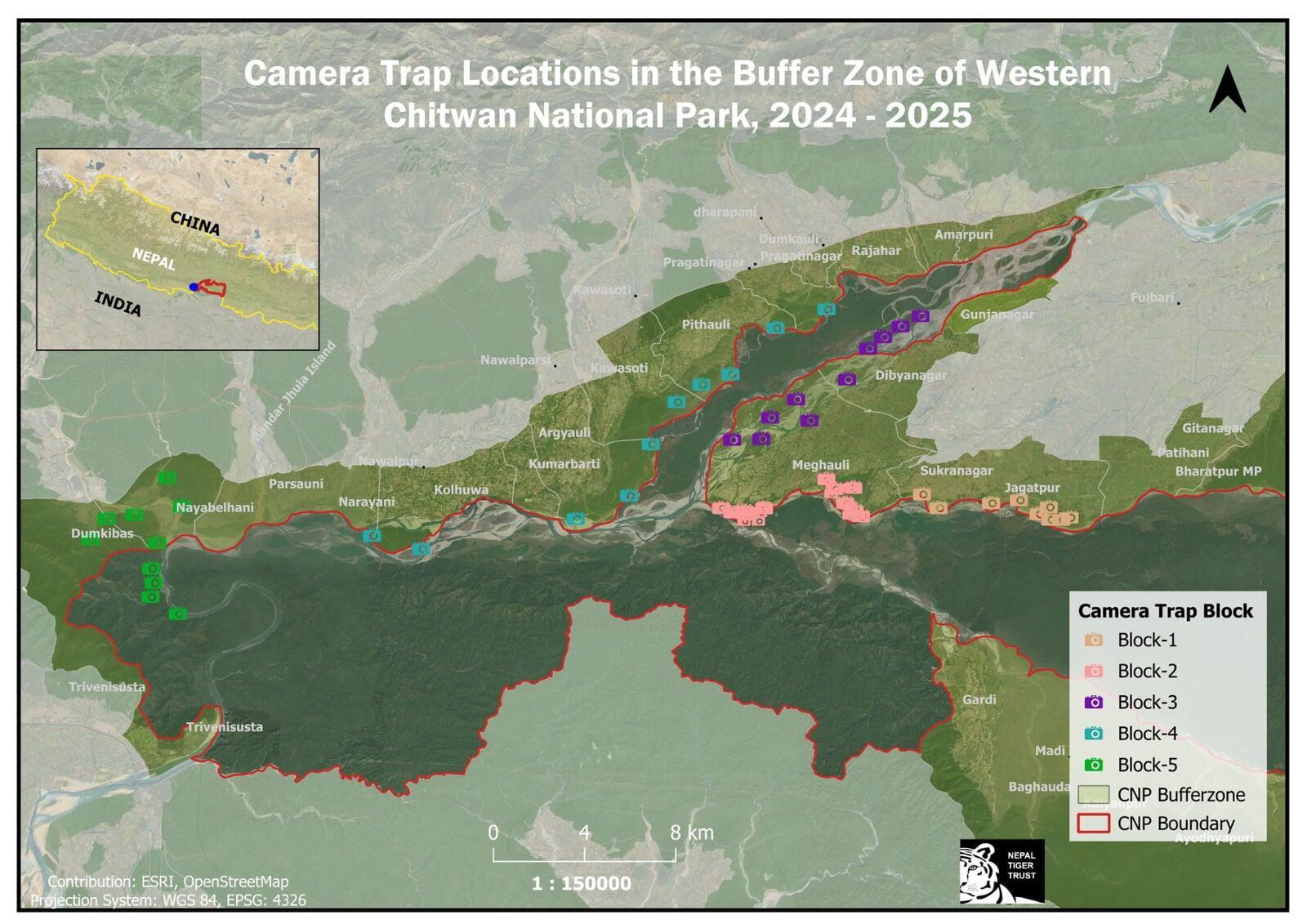
The majestic roar of the tiger is echoing farther than ever before in western Chitwan National Park (CNP), Nepal. The latest findings from the Long-Term Tiger Monitoring (LTTM) project reveal exciting growth and expansion in tiger populations, particularly within the Buffer Zone Community Forests (BZCFs) surrounding the park.
During the 2024–2025 monitoring season, 71 camera stations across five strategic blocks in the BZCFs, accumulating an impressive 1,535 trap nights. The results? A remarkable 29 individual tigers were photographed, including:
- 9 resident tigers (5 females and 4 males)
- 14 transient or non-resident tigers
- 6 cubs, born to three of the resident females
These numbers tell a compelling story. The presence of breeding females and their cubs in the buffer zones suggests that tigers are not only surviving but thriving beyond the core protected areas of CNP. This expansion into community-managed forests points to improved habitat conditions and a growing tiger population.
Adding to the optimism, the camera traps also captured images of a wide variety of prey species, indicating a healthy and balanced ecosystem—an essential factor for sustaining large carnivores like tigers.
However, the report also notes a few incidents of human–tiger conflict, a reminder of the challenges that come with wildlife dispersal into human-dominated landscapes. These encounters highlight the need for thoughtful coexistence strategies that protect both local communities and the endangered big cats.
The LTTM project highlights the importance of continued monitoring. Long-term data collection through camera trapping not only helps track population trends and movement patterns but also informs conservation efforts aimed at ensuring harmony between people and wildlife. Thanks to the dedication of park staff, conservationists, and local communities working hand in hand. For full report please read here.
We invite you to support our conservation efforts by donating and sharing this cause. To stay updated with the latest tiger news, please subscribe
